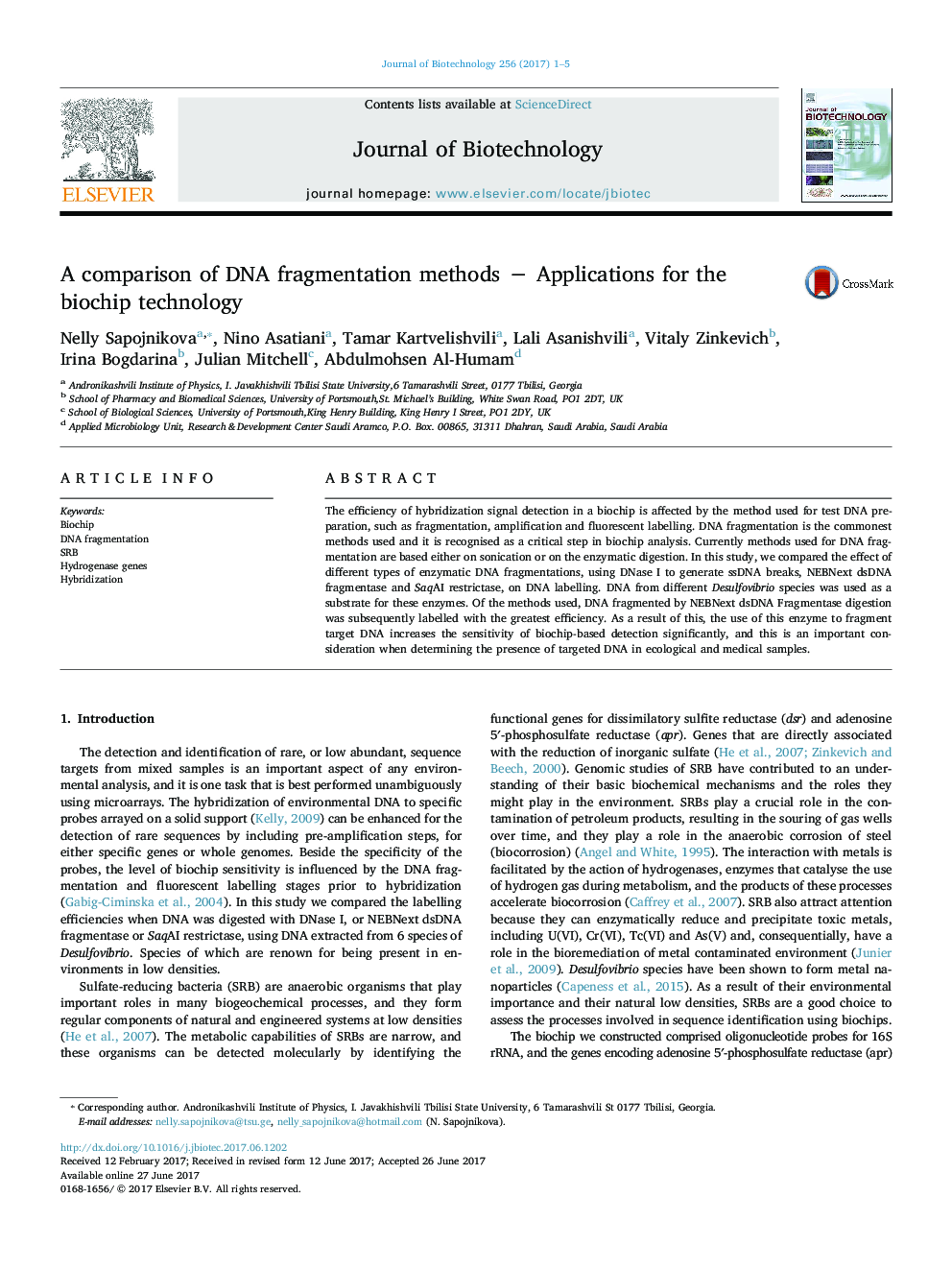| Article ID | Journal | Published Year | Pages | File Type |
|---|---|---|---|---|
| 4753509 | Journal of Biotechnology | 2017 | 5 Pages |
â¢Different ways of DNA fragmentation before labelling and hybridization are studied.â¢The ways of enzymatic fragmentation influence on the labelling efficiency.â¢DNA fragmented by NEBNext dsDNA Fragmentase is labelled with the greatest efficiency.â¢The use of this enzyme increases the sensitivity of biochip-based detection significantly.
The efficiency of hybridization signal detection in a biochip is affected by the method used for test DNA preparation, such as fragmentation, amplification and fluorescent labelling. DNA fragmentation is the commonest methods used and it is recognised as a critical step in biochip analysis. Currently methods used for DNA fragmentation are based either on sonication or on the enzymatic digestion. In this study, we compared the effect of different types of enzymatic DNA fragmentations, using DNase I to generate ssDNA breaks, NEBNext dsDNA fragmentase and SaqAI restrictase, on DNA labelling. DNA from different Desulfovibrio species was used as a substrate for these enzymes. Of the methods used, DNA fragmented by NEBNext dsDNA Fragmentase digestion was subsequently labelled with the greatest efficiency. As a result of this, the use of this enzyme to fragment target DNA increases the sensitivity of biochip-based detection significantly, and this is an important consideration when determining the presence of targeted DNA in ecological and medical samples.
